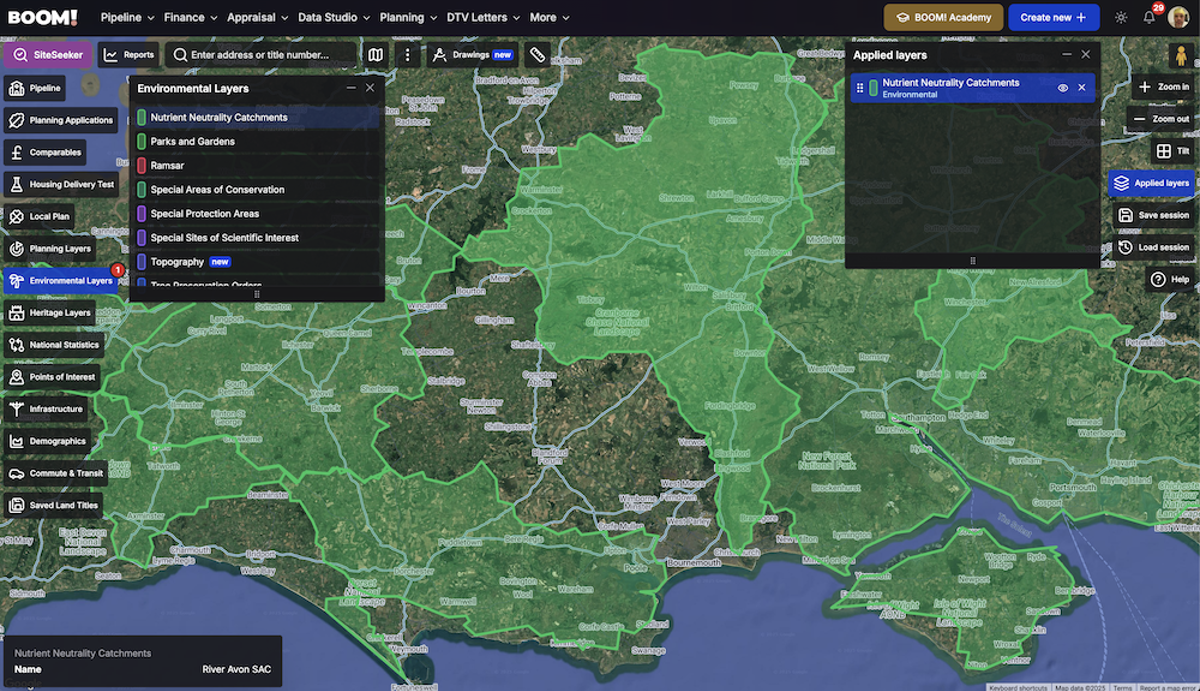Nutrient Neutrality 101: How New Developers Turn Red Tape into Opportunity (2025 Guide)







Imagine finding the perfect plot for your new housing project – only to be blocked by a rule you’ve never heard of. This scenario is all too real for UK property developers facing nutrient neutrality regulations. In fact, an estimated 145,000 homes are now delayed across 74 local authorities because of this issue. It’s a nationwide problem few saw coming, and it’s putting plans on hold from Norfolk to Somerset. But for an ambitious beginner, knowing the ins and outs of nutrient neutrality can turn this so-called red tape into a competitive edge. Keep reading to learn what nutrient neutrality means, why it’s stalling developments, and how you can navigate – and even exploit – nutrient neutrality catchments to your advantage.
What Is Nutrient Neutrality (and Why Should You Care)?
Nutrient neutrality means ensuring a new development does not increase harmful nutrient pollution (like nitrogen or phosphorus runoff) in nearby rivers, estuaries, and wetlands. In plain English, you must prove your project won’t add to the algae-feeding nutrients already choking some of our waterways. These nutrients, mainly phosphates and nitrates, typically come from farm fertilisers and sewage discharge. When too much ends up in the water, it triggers algal blooms (a process called eutrophication) that deplete oxygen and devastate wildlife. Nutrient neutrality rules aim to protect these fragile ecosystems.
Here’s the kicker: new housing isn’t the big culprit for this pollution. Agriculture and wastewater plants contribute the vast majority of excess nitrates and phosphates, while new houses add only a very small fraction. Yet, thanks to a 2018 European court ruling, UK planners must now enforce strict nutrient neutrality requirements on almost any development that adds “overnight accommodation” in certain areas. In other words, even your small 5-home project or barn conversion could get caught if it’s in the wrong location.
Why Nutrient Neutrality Catchments Are Freezing New Developments
Since 2019, Natural England has issued nutrient neutrality advisories across more and more regions. Today, 27 watershed catchments across England (spanning around 62 council areas) are under these rules. That means if your site drains into one of the affected rivers or wetlands, the local authority cannot green-light your project until you demonstrate it won’t worsen the nutrient problem. It’s like a red light on development – and it’s happening in many high-demand areas.
The impact? Thousands of planned homes are stuck in limbo. By one government estimate, about 16,500 homes per year are being held back by nutrient neutrality requirements – over 100,000 homes by 2030 if nothing changes. The Home Builders Federation points to an even sharper reality: nutrient rules could be blocking 120,000 new homes each year. In practice, some places have virtually ground to a halt. For example, in the River Wye catchment (Herefordshire), self-build projects have been stalled for over three years due to nutrient neutrality limits. In Somerset, roughly 11,000 homes sit delayed in backlog; in Hampshire around 16,000 are on hold. From the south coast’s Solent region to Kent’s wetlands, developers large and small are feeling the squeeze.
Curiosity trigger: Why would the government throttle housing if new homes aren’t the main polluters? The truth is, this policy arose from environmental court judgments – essentially, the UK is obliged to protect certain sensitive habitats. Officials had no choice but to halt even minor sources of nutrients until a solution is found. It’s an urgent ecological issue colliding with an urgent housing issue. And if you’re a developer caught in the middle, time is money. Every month your project is delayed, costs rise and opportunities fade.
Don’t panic. Nutrient neutrality does add a new hurdle, but understanding it now will save you costly mistakes. Let’s break down how to know if your prospective site is affected and what you can do about it.
Is Your Site in a Nutrient Neutrality Zone? How to Find Out Early
The first step is to check if a parcel of land lies within a nutrient neutrality catchment before you invest too much into it. Historically, figuring this out meant poring over council maps or Natural England data sets – not exactly beginner-friendly tasks. Today, however, technology makes it simple. PropTech platforms like BOOM! offer nationwide map overlays that highlight all nutrient neutrality catchments at a glance. For example, in BOOM!’s SiteSeeker tool you can apply a constraint filter to flag or exclude sites inside nutrient neutrality zones, and the platform’s Data Layer will outline those catchment boundaries on the map. In seconds, you’ll see whether a plot is clear or carries this hidden condition.

This kind of early due diligence is crucial. Nutrient neutrality zones are not always obvious just by looking at a site – they’re defined by water drainage patterns, not postal codes. A site five miles from a protected wetland could still be in its catchment. With a quick digital check, you avoid nasty surprises down the line. BOOM!’s mapping data is updated with the latest Natural England catchments, so you can trust that you’re seeing the current reality.
Bottom line: Always check the catchment on day one. It’s far better to know upfront if nutrient neutrality will be an obstacle than to have your planning application unexpectedly put on ice.
Caught in the Zone? Here’s How to Mitigate Nutrient Neutrality
What if you do find a promising site inside a nutrient neutrality catchment? All is not lost. Being in a red zone means you have to make your project “nutrient neutral” on paper – essentially neutralising your development’s nutrient impact through mitigation. There are a few strategies to achieve nutrient neutrality:
On-site Mitigation: Incorporate design features that reduce nutrient runoff from your development itself. For example, install advanced wastewater treatment systems or reed-bed drainage that strip phosphates, use Sustainable Drainage Systems (SuDS) to naturally filter water, and ensure minimal fertiliser use on any landscaping. Replacing old inefficient septic tanks with modern treatment plants can also cut nutrient output. On larger sites, you might create ponds or wetlands on the property to capture and break down nutrients before water leaves the site.
Off-site Mitigation: If fully neutralizing on-site isn’t possible, you can offset the nutrients by improving conditions elsewhere in the same catchment. This often means funding or partnering in a scheme that, say, creates a wetland or woodland nearby to soak up the equivalent amount of nitrogen/phosphorus your project would produce. Local authorities and environmental groups are actively setting up such projects. In fact, since 2022 Natural England has been running a Nutrient Mitigation Scheme to identify and support off-site projects (like new wetlands) that developers can contribute to. The government has put £30 million into this scheme and is encouraging private landowners to offer land for mitigation. Translation: you might pay a fee to a council or land trust, which then uses those funds to remove nutrients from the environment, balancing out your development’s impact.
Nutrient Credits (Trading): The newest and increasingly common solution is buying nutrient mitigation credits. These are essentially permits sold by an authorized scheme that certify a certain amount of nutrient removal has been achieved elsewhere, allowing your development to proceed. Natural England’s pilot credit program, for example, has already provided credits covering 4,200 new homes in the Tees catchment. Many local authorities have or are setting up similar credit systems. For a developer, this works much like a carbon credit: you purchase enough credits to offset your development’s nutrient output, satisfying the “neutral” requirement. It’s a cost to factor in (prices vary by area and demand), but it can be a straightforward way to unlock a project that would otherwise be stuck. The UK government also launched a £110 million fund to help create more of these credit-generating schemes across the country, so availability is expected to grow.
For a small developer, navigating these mitigation options might seem daunting at first. But remember, local planning authorities want to see housing move forward (they’re under pressure to hit building targets too). Most councils in affected areas now have guidance notes, calculators, and dedicated “nutrient officers” to advise you. Don’t be afraid to consult them early. If you show up with a nutrient budget calculation and a plan to mitigate (or the intent to buy credits), you’re miles ahead of competitors who show up unaware of the issue.
Turning Red Tape into Opportunity: Strategies for Savvy Developers
Here’s the silver lining: because nutrient neutrality has spooked so many would-be developers, competition for sites in affected areas has thinned out. Seasoned developers often avoid these zones or put their projects on pause, awaiting clearer rules. That caution from others could be your opportunity. If you’re willing to tackle the nutrient issue proactively, you might secure land or deals at a better price – and be ready to build when others are still scrambling.
Think about it: A landowner in a nutrient neutrality catchment might be struggling to sell because buyers keep walking away due to the uncertainty. If you come along knowledgeable about mitigation (and perhaps armed with data from BOOM! showing exactly what’s needed), you can negotiate from a position of strength. You can explain how you plan to achieve neutrality – maybe by purchasing credits or teaming up with the council’s mitigation scheme – giving the seller confidence that you’re a serious buyer. Meanwhile, you likely face less bidding competition for that plot than an equivalent one outside the zone. This is how developers “in the know” unlock hidden deals.
Moreover, focusing on nutrient neutrality early forces you to build good habits: doing thorough site research, understanding environmental constraints, and planning creative design solutions. These skills give you a long-term edge as sustainability rules tighten in the future.
That said, speed is key. The longer you delay adapting to these rules, the more you risk losing out. Every month of hesitation is another month where 100+ potential projects nationwide stay frozen – and another month your competitors might get ahead by figuring this out. The UK government isn’t likely to simply abolish nutrient neutrality (an attempt to remove it in late 2023 was blocked in Parliament ). Instead, the trend is towards finding solutions within the rules, via mitigations and technical fixes. In other words, nutrient neutrality is here to stay for the foreseeable future. Developers who accept that and learn to work with it will build more homes than those waiting for a miracle repeal.
Conclusion: From Constraint to Catalyst – Use Nutrient Neutrality to Your Advantage
No doubt, nutrient neutrality can feel like a hassle. It’s an extra layer of consideration that our predecessors didn’t worry about. But far from being just red tape, it’s a catalyst pushing the industry toward smarter, cleaner growth. As a new or small developer, you now have insider knowledge that many are still catching up on. You’ve learned what nutrient neutrality is, identified whether it affects your sites, and discovered there are paths to overcome it.
By checking sites early (with tools like BOOM! for instant catchment data), planning mitigation (on-site tweaks, off-site projects, or credits), and perhaps even targeting overlooked areas, you can turn this challenge into a competitive advantage. You’ll avoid the pitfalls that trap the unprepared – no wasted months on a blocked application, no surprise costs that bust your budget. Instead, you’ll move with confidence and agility, even in the trickiest nutrient hot-spots.
Remember, every developer now has the same rules to play by, but very few have mastered them. Knowledge and action are your differentiators. The housing crisis isn’t waiting, and neither should you. Nutrient neutrality catchments may be a new reality, but for those who adapt, they can be grounds for opportunity rather than obstacle. Use this guide as your springboard, stay informed with credible sources and data, and go secure that next site with your eyes wide open. Your future projects – and the environment – will thank you for it.
To better understand how you can leverage Nutrient Neutrality sign up for a 7 day FREE trial or book a call with us and let us show you.